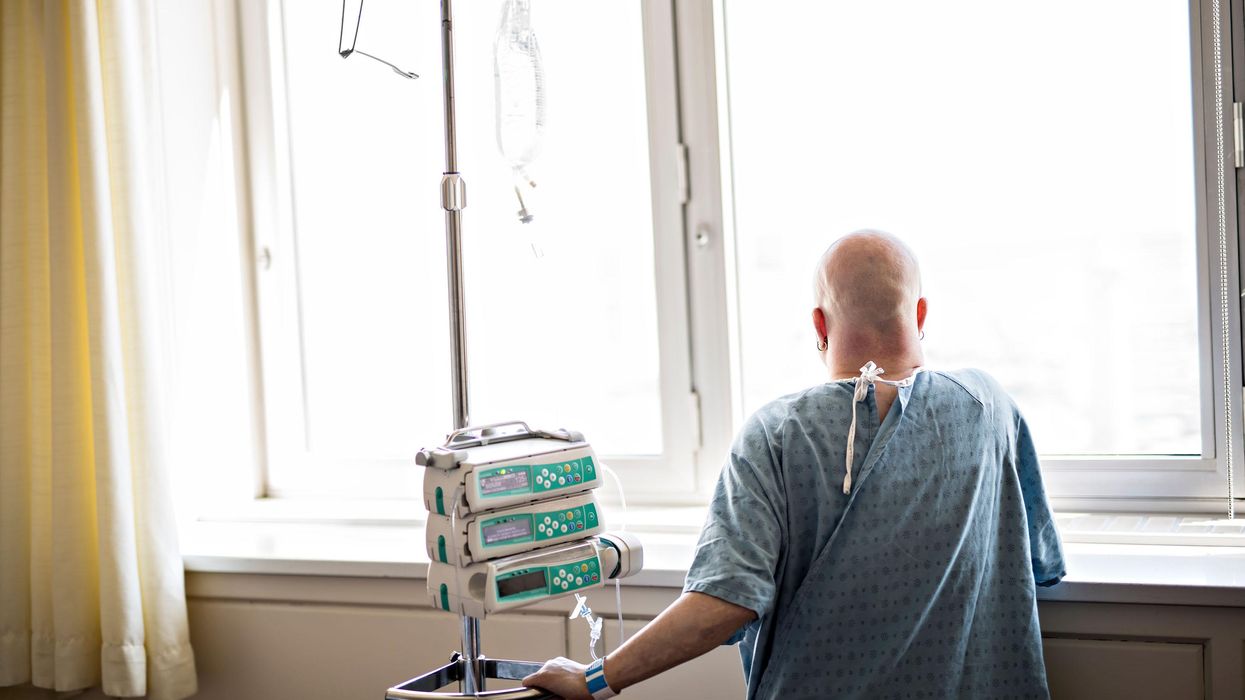(CNN) — The rate of people dying from cancer in the United States has continuously declined over the past three decades, according to a new report from the American Cancer Society.
The US cancer death rate has fallen 33 percent since 1991, which corresponds to an estimated 3.8 million deaths averted, according to the report, published Thursday in CA: A Cancer Journal for Clinicians. The rate of lives lost to cancer continued to shrink in the most recent year for which data is available, between 2019 and 2020, by 1.5 percent.
The 33 percent decline in cancer mortality is "truly formidable," said Karen Knudsen, chief executive officer of the American Cancer Society.
The report attributes this steady progress to improvements in cancer treatment, drops in smoking and increases in early detection.
"New revelations for prevention, for early detection and for treatment have resulted in true, meaningful gains in many of the 200 diseases that we call cancer," Knudsen said.
In their report, researchers from the American Cancer Society also pointed to HPV vaccinations as connected to reductions in cancer deaths. HPV, or human papillomavirus, infections can cause cervical cancer and other cancer types, and vaccination has been linked with a decrease in new cervical cancer cases.
Among women in their early 20s, there was a 65 percent drop in cervical cancer rates from 2012 through 2019, "which totally follows the time when HPV vaccines were put into use," said Dr. William Dahut, the society's chief scientific officer.
"There are other cancers that are HPV-related — whether that's head and neck cancers or anal cancers — so there's optimism this will have importance beyond this," he said.
The lifetime probability of being diagnosed with any invasive cancer is estimated to be 40.9 percent for men and 39.1 percent for women in the US, according to the new report.
The report also includes projections for 2023, estimating that there could be nearly 2 million new cancer cases — the equivalent of about 5,000 cases a day — and more than 600,000 cancer deaths in the United States this year.
During the early days of the Covid-19 pandemic, many people skipped regular medical exams, and some doctors have seen a rise in advanced cancer cases in the wake of pandemic-delayed screenings and treatment.
The American Cancer Society researchers were not able to track "that reduction in screening that we know we all observed across the country during the pandemic," Knudsen said. "This time next year, I believe our report will give some initial insight into what the impact was in the pandemic of cancer incidence and cancer mortality."
'The continuation of good news'
The new report includes data from national programs and registries, including those at the National Cancer Institute, the US Centers for Disease Control and Prevention and the North American Association of Central Cancer Registries.
Data showed that the US cancer death rate rose during most of the 20th century, largely due to an increase in lung cancer deaths related to smoking. Then, as smoking rates fell and improvements in early detection and treatments for some cancers increased, there was a decline in the cancer death rate from its peak in 1991.
Since then, the pace of the decline has slowly accelerated.
The new report found that the five-year relative survival rate for all cancers combined has increased from 49 percent for diagnoses in the mid-1970s to 68 percent for diagnoses during 2012-18.
The cancer types that now have the highest survival rates are thyroid at 98 percent, prostate at 97 percent, testis at 95 percent and melanoma at 94 percent, according to the report.
Current survival rates are lowest for cancers of the pancreas, at 12 percent.
The finding about a decreasing cancer death rate shows "the continuation of good news," said Dr. Otis Brawley, an oncology professor at Johns Hopkins University who was not involved in the research.
"The biggest reason for the decline that started in 1991 was the prevalence of smoking in the United States started going down in 1965," said Brawley, a former chief medical officer of the American Cancer Society.
"That's the reason why we started having a decline in 1991, and that decline has continued because the prevalence of people smoking in the United States has continued to go down," he said. "Now, in certain diseases, our ability to treat has improved, and there are some people who are not dying because of treatment."
Some cancers are rising
Although the death rate for cancer has been on a steady decline, the new report also highlights that new cases of breast, uterine, and prostate cancer have been "of concern" and rising in the United States.
Incidence rates of breast cancer in women have been increasing by about 0.5 percent per year since the mid-2000s, according to the report.
Uterine corpus cancer incidence has gone up about 1percent per year since the mid-2000s among women 50 and older and nearly 2 percent per year since at least the mid-1990s in younger women.
The prostate cancer incidence rate rose 3 percent per year from 2014 through 2019, after two decades of decline.
Knudsen called prostate cancer "an outlier" since its previous decline in incidence has reversed, appearing to be driven by diagnoses of advanced disease.
On Thursday, the American Cancer Society announced the launch of the Impact initiative, geared toward improving prostate cancer incidence and death rates by funding new research programs and expanding support for patients, among other efforts.
"Unfortunately, prostate cancer remains the number one most frequently diagnosed malignancy amongst men in this country, with almost 290,000 men expected to be diagnosed with prostate cancer this year," Knudsen said. Cancer diagnosed when it is confined to the prostate has a five-year survival rate of "upwards of 99 percent," she said, but for metastatic prostate cancer, there is no durable cure.
"Prostate cancer is the second leading cause of cancer death for men in this country," she said. "What we're reporting is not only an increase in the incidence of prostate cancer across all demographics but a 5 percent year-over-year increase in diagnosis of men with more advanced disease. So we are not catching these cancers early when we have an opportunity to cure men of prostate cancer."
'It's well past time for us to take health inequities seriously'
Breast, uterine and prostate cancers also have a wide racial disparity, in which communities of color have higher death rates and lower survival rates.
In 2020, the risk of overall cancer death was 12 percent higher in Black people compared with White people, according to the new report.
"Not every individual or every family is affected equally," Knudsen said.
For instance, "Black men unfortunately have a 70 percent increase in incidence of prostate cancer compared to White men and a two- to four-fold increase in prostate cancer mortality as related to any other ethnic and racial group in the United States," she said.
The data in the new report demonstrates "important and consistent" advances against cancer, Dr. Ernest Hawk, vice president of cancer prevention and population sciences at the University of Texas MD Anderson Cancer Center, said in an email.
"Cancer is preventable in many instances and detectable at an early stage with better outcomes in many others. When necessary, treatments are improving in both their efficacy and safety. That's all great news," Hawk wrote.
"However, it's well past time for us to take health inequities seriously and make them a much greater national priority. Inequities in cancer risks, cancer care and cancer outcomes are intolerable, and we should not be complacent with these regular reminders of avoidable inequities," he said. "With deliberate and devoted effort, I believe we can eliminate these disparities and make even greater progress to end cancer."
The-CNN-Wire
™ & © 2023 Cable News Network, Inc., a Warner Bros. Discovery Company. All rights reserved.


















































